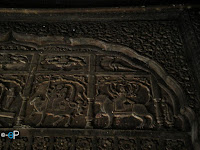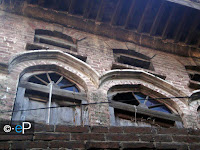Eminabad: A Tapestry of Heritage, History, and
Cultural Resilience
Photo courtesy Zaheer Chaudhry
Introduction: Eminabad stands as a testament to the cultural and historical legacy of Pakistan, nestled along the Grand Trunk Road in Punjab. This article aims to unravel the layers of Eminabad's history, shedding light on its architectural treasures, religious landmarks, and the cultural mosaic that defines its identity.
Historical Background: Before the partition, Eminabad was a melting pot of religious diversity, with Muslims, Hindus, and Sikhs coexisting harmoniously. The mass migration that accompanied the birth of Pakistan led to the departure of Hindu and Sikh communities to India, leaving behind their shrines and traces of a shared past.
Architectural Marvels: Eminabad is adorned with historical buildings that stand as silent witnesses to bygone eras. Kali Kothi, a structure built by Kartar Nath Manchandain in 1932, showcases the architectural splendor of the town. Among these treasures, the Dewan Hawali emerges as the most striking piece of historical architecture, reflecting the craftsmanship of its time.
Religious Landmarks: The town is home to three historical shrines, Shive Mandars, and Gurdwara Nanak Sahib, emphasizing the once vibrant tapestry of religious diversity. Guru Nanak, the founder of Sikhi, is said to have stayed at Eminabad, leaving an indelible mark on the cultural and religious landscape. The Gurdwara built over this significant site is a testament to the enduring legacy of Sikh history.
Cultural Traditions: Eminabad's cultural vibrancy is manifested in its love for kite flying, a tradition associated with the Basant festival that was once an integral part of every Eid celebration. The ban on kite flying by the Pakistani government, driven by valid reasons, has altered the cultural landscape but has not dampened the spirit of the people.
Contemporary Scenario: The research also sheds light on the present-day scenario, acknowledging the efforts of the Pakistani government in preserving cultural heritage. The construction of a new Gurdwara building at the cost of PKR 20 million reflects the commitment to safeguarding historical landmarks, with the Sikh community actively participating in its maintenance.
Acknowledgments: The research expresses gratitude to the local community members who generously shared their time and insights. Special thanks are extended to Sayed Arif Ali, Hafiz Ali, the last natives of Dewan Haweli, and Aqib, the neighbor of Kali Kothi, for their kindness and cooperation during the research.
Conclusion: Eminabad stands as more than a geographical location; it is a living testament to the confluence of diverse cultures, religions, and traditions. Through this research, we aim to foster a deeper understanding of Eminabad's historical significance, ensuring that its heritage continues to resonate through the corridors of time.



















































No comments:
Post a Comment